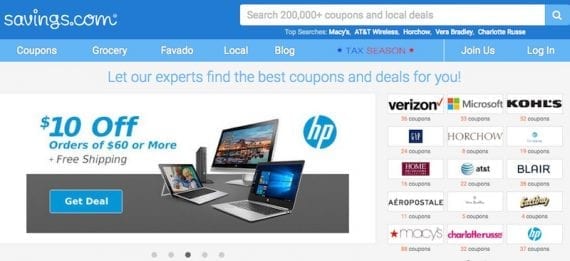Finding the right affiliates to build an affiliate-marketing program means understanding their traffic sources before they are approved. Affiliates come in all shapes and sizes. Once a manager can identify an affiliate’s model of promotion, it’s easier to plan for success.
Too many affiliate-marketing programs run on auto-approve or are managed by merchants that are only looking at the overall sales from the channel. But when managers study the various types of affiliate promotions, they ask more questions.
After years of cleaning up programs, I encourage new managers to perfect the fundamental skill of investigating their affiliates. Each model of promotion needs attention and some require attribution rules to protect others. The common goal is to grow the affiliate program month over month and year over year. Depending on seasonality of the products, managers can plan ahead and activate specific models to achieve goals.
Be selective during the application process. When declining an affiliate, be willing to give it a second chance and learn more about its strategy. A 50 percent decline rate is normal for top programs.
In this post, I’ll describe the most common models of affiliate marketers and how managers should view them.
Who Are Your Affiliates?
Coupon sites. These are the most common affiliates. Internet marketers from around the world create new coupon sites daily in hopes of cashing in on the lucrative habits of consumers searching for codes before closing out the transaction. Top coupon sites such as RetailMeNot.com, Coupons.com, and Savings.com have strong search engine optimization for brand names. They work closely with merchants and have a higher commitment to quality than the cookie-cutter templates.
Some coupon sites will do what it takes to entice the customer to click on trackable links. The display of fake codes with deep discounts is an unfortunate practice. If the merchant doesn’t hear any customer complaints, these affiliates can take credit for sales they unjustly earned.
Managers need to spot-check affiliates’ landing pages often to ensure the quality of their promotions. If the affiliate does not comply, it should be removed immediately. Depending on the terms of service, its sales could be voided also.

Savings.com, RetailMeNot.com, and Coupons.com are examples of high-quality coupon sites that work closely with merchants.
Deal sites. If the product is a strong holiday gift item, the summer months may see much fewer orders. In this case, the ability to discount heavily can help a merchant clear out the inventory and make room for the next holiday hot items. Deal sites such as SlickDeals.net and Bradsdeals.com can wipe out that inventory if the consumer promotion is strong enough. These are essentially coupon sites but the audience is looking for impulse buys at the lowest prices.
Loyalty sites. This coupon model includes several of the largest affiliates in the world. The cash back model yields a high volume of sales from loyal users of the platforms. Brands rely on this model to satisfy customers but managers should tread cautiously.
Some loyalty sites engage in the controversial practice of using toolbars or browser extensions to facilitate or automate the cash back reward. This type of promotion often overwrites affiliate cookies, thus lowering the conversion for affiliates that introduce customers.
Others sites, such as SunshineRewards.com, have strong, legitimate communities of buyers who are always looking for an edge in the sales process. Faithful followers have access to best practices and exclusive deals.
Paid search. Affiliates spend money to make money by direct linking from the search engine to the merchant’s site. Merchants typically reject, initially, the idea of affiliates bidding on trademark keywords in the search engines. The merchant is either heavily invested in that channel itself or it feels the customer will find the site naturally and it doesn’t want to pay on what it consider “easy sales.”
The most common violation of terms of service is when a paid search affiliate gets caught doing exactly that. The temptation is too great and very few affiliates reinvest the easy funds into the more expensive generic keywords or the long-tail. BrandVerity.com and other compliance monitoring services should be a part of every manager’s arsenal to combat this threat.

BrandVerity can help companies monitor the use of their brand names.
Paid search plus. This model is a unique blend of coupon and paid search where the affiliates bid on a brand’s trademark name plus words, such as “coupon,” “discounts,” “deals” and “promo codes.” The affiliates aren’t direct linking, but they are trying to capture the sale before the shopper finds coupons through search engines. Merchants need to decide if this practice should be allowed and otherwise monitor constantly for violations.
Banner farms are web pages that contain nothing but banner ads that are linked to affiliate deals. They still exist in 2017 but they are the least effective affiliate model. The one-stop-fits-all model may have worked in the early days of affiliate marketing, but not anymore. These affiliates will likely never earn a penny. Nonprofit organizations steer toward this model in hopes of appealing to a broad range of customers. They would benefit more from a strategic plan focused on individual product promotions. The right managers can educate them on ways to be successful.
Datafeed affiliates are content publishers that build large sites based on showcasing product images and descriptions, not brand names. They still exist but they are dwindling in numbers. They compare prices to competitive products or build on themes around particular niches. Datafeed affiliates typically yield a very high ratio of new customers. Google algorithm changes have devastated their search rankings.
Social media. Not every application has a unique web domain attached anymore. Social media affiliates vary from Pinterest users to Facebook group owners for niche specialties. The more successful ones occasionally drop in affiliate promotions that are relevant to the main topic. These influencers have large followings and are a growing segment of affiliate marketing. Customers like these visual promotions because they involve everyday use of individual products.
Bloggers represent the largest contingency of content affiliates and are highly recruited in top programs. Blogger groups that are seeing success include weddings, lifestyle, parenting, and foodie-gourmet. Bloggers are often significant influencers and can add massive amounts of eyeballs to new products. Many specialize in product reviews and schedule placements across multiple platforms for maximum impact.
Niche content. The most important content affiliate builds sites specifically for a brand or category of product. These webmasters are savvy affiliates that understand SEO, analytics, reviews, comparisons, datafeeds, and the power of building relationships with merchants. They can be brand loyal, but merchants should never underestimate them. They will move where the money is and if they drive a significant amount of volume per month, their departure could hurt immediately.
Wrapping Up
Recruiting the right affiliates is important for growth but it’s crucial for merchants to understand how all affiliates drive traffic. Managers need to ask questions often and set strict terms that are enforced daily.




